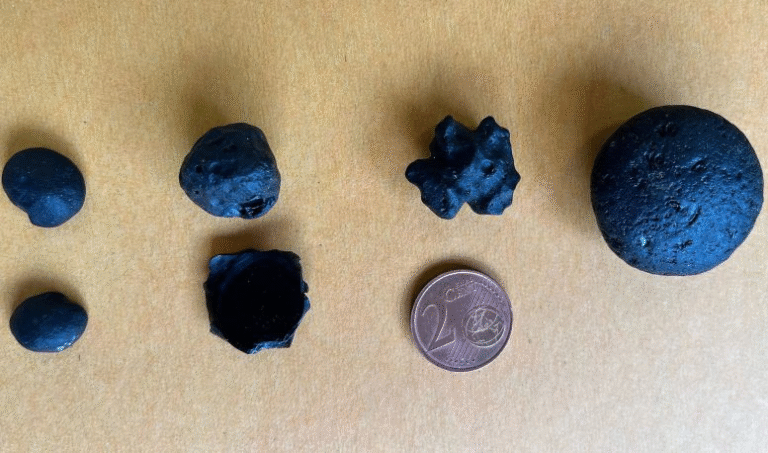Abandoned Coal Mines Are Quietly Releasing Massive Amounts of Hidden Carbon Into the Atmosphere

Abandoned coal mines may look silent and forgotten, but new research shows they are still sending large amounts of carbon dioxide (CO2) into the atmosphere long after mining stops. A growing body of scientific work, led by geochemist Dr. Dorothy Vesper of West Virginia University, reveals that mine drainage—the acidic water that flows out of old mines—can carry extremely high concentrations of dissolved CO2. When this water reaches open air, that CO2 escapes into the atmosphere, adding an unexpected and largely uncounted source of emissions to the climate puzzle.
This issue is especially important in places like Pennsylvania and West Virginia, where coal mining has been underway for more than 250 years. Pennsylvania alone has thousands of abandoned mines, many of which were never regulated, documented, or properly sealed—particularly those that closed before the 1977 federal mining laws came into effect. These older sites often leak acid mine drainage, a major environmental problem on its own. But now scientists are learning that these leaks are doing more than polluting rivers—they are carrying geologic carbon back into the atmosphere.
Below is a clear, detailed breakdown of what researchers have discovered, how the process works, why it matters, and what future solutions may look like.
How Mine Drainage Releases CO2
The mechanism behind this hidden carbon source is surprisingly straightforward:
- Coal seams and surrounding rocks often contain sulfide minerals.
When exposed to oxygen and water—something that happens when a mine is dug—these minerals react to form sulfuric acid. - The acidic water then flows through the mine and reacts with nearby carbonate rocks, such as limestone.
These carbonate rocks hold ancient carbon that has been locked away for millions of years. - The sulfuric acid dissolves the carbonate, releasing carbonate ions (CO3) that convert into dissolved CO2 or other forms of inorganic carbon.
- When the mine drainage reaches the surface and meets air, the dissolved CO2 vigorously degasses, escaping into the atmosphere.
This means abandoned mines are functioning like underground carbon factories—slowly but continuously extracting stored geologic carbon and venting it into the air, sometimes at levels hundreds or even thousands of times higher than normal stream water.
What the Latest Research Shows
At the GSA Connects 2025 conference in San Antonio, Dr. Vesper presented years of fieldwork on this phenomenon. Her team has been tracking mine drainage sites across Pennsylvania and West Virginia and measuring how much CO2 the water carries out of the ground.
Some key findings include:
- Some drainage sites contain up to 1,000 times more CO2 than would normally be found in fresh water.
- Measurements from over 200 samples across 50+ locations show dissolved CO2 concentrations ranging from 0.2 mM to 13 mM, with a typical value around 4.5 mM—far above natural limestone springs.
- In a 2016 study, Vesper’s team found that just 140 mines in Pennsylvania release as much CO2 each year as a small coal-fired power plant.
- A more recent regional study found CO2-evasion fluxes on the order of several tons of carbon per year in certain areas, even though these were just small test regions representing a fraction of the mining landscape.
Perhaps the biggest challenge is that scientists don’t even know how many abandoned mines exist, let alone where all their drainage outlets are located. Many mines were never mapped, some have collapsed, and others are hidden deep in forested regions. Teams often hike out to a reported drainage site only to find it has shifted, dried up, or disappeared entirely.
This lack of documentation means the true nationwide or global CO2 impact remains unknown—but is very likely underestimated.
Why Measuring This Carbon Is So Difficult
One of the most surprising hurdles in the research was that standard environmental instruments cannot measure such high CO2 levels. Many field sensors max out far below the concentrations found in mine water.
To get around this, Dr. Vesper turned to an unlikely industry: beverage carbonation. Instruments used in breweries and soda bottling plants—designed to test CO2 levels in pressurized vats—ended up working perfectly for mine drainage.
These portable carbonation meters allowed the team to finally capture accurate readings at sites that traditional environmental meters simply couldn’t handle. This creative equipment solution opened the door to documenting previously unknown extremes of dissolved CO2.
Why This Hidden Carbon Source Matters
This emissions pathway matters for several reasons:
- It’s long-lasting.
Mines abandoned more than 100 years ago can still release CO2 today. - It’s geologic carbon.
This is not carbon that recently cycled through the atmosphere—it comes from dissolving ancient rock. Releasing it is similar, in principle, to burning fossil fuels. - It’s widespread.
Coal mining regions exist across the U.S. and worldwide. Wherever mines intersect sulfide and carbonate rocks, this mechanism can occur. - It’s not included in most carbon budgets.
Climate models and greenhouse gas inventories barely acknowledge this source because the scientific data is only now becoming available.
For countries and states working on accurate emissions reporting—or for scientists trying to close gaps in the global carbon cycle—this is a potentially important missing piece.
Could Methane Also Be Involved?
Dr. Vesper’s team plans to add methane measurements to future fieldwork. Some abandoned mines trap methane pockets or generate methane through subsurface microbial activity. If both CO2 and methane (a much more potent greenhouse gas) are leaking from these sites, the climate implications could be even more significant.
How Remediation Could Help
The good news is that reducing mine-drainage CO2 emissions may not require high-tech solutions. Early suggestions point to relatively simple engineering approaches:
- Keep mine water contained in underground pipes rather than allowing it to splash into open channels.
- Direct that water into treatment wetlands from below the surface, preventing contact with open air until after remediation.
- Modify passive treatment systems to minimize turbulence and reduce degassing.
These small changes could help trap more carbon in the water or encourage it to precipitate out rather than escape to the atmosphere.
What This Means for the Global Picture
Coal mining has already contributed massively to climate change through fuel combustion. But this research reveals an additional, quieter legacy: abandoned mines themselves continue emitting greenhouse gases indefinitely.
Because many countries have vast numbers of undocumented or poorly sealed mines—China, India, Australia, Russia, South Africa, the U.K., and more—the global magnitude of this issue could be substantial.
Now that researchers have identified the mechanism, the next steps are large-scale mapping, long-term monitoring, and updated climate accounting.
Research Reference
CO2 Releases from Abandoned Coal Mines in Pennsylvania and West Virginia
https://gsameetings.secure-platform.com/connects25/solicitations/103002/sessiongallery/schedule/items/95149/application/10087





